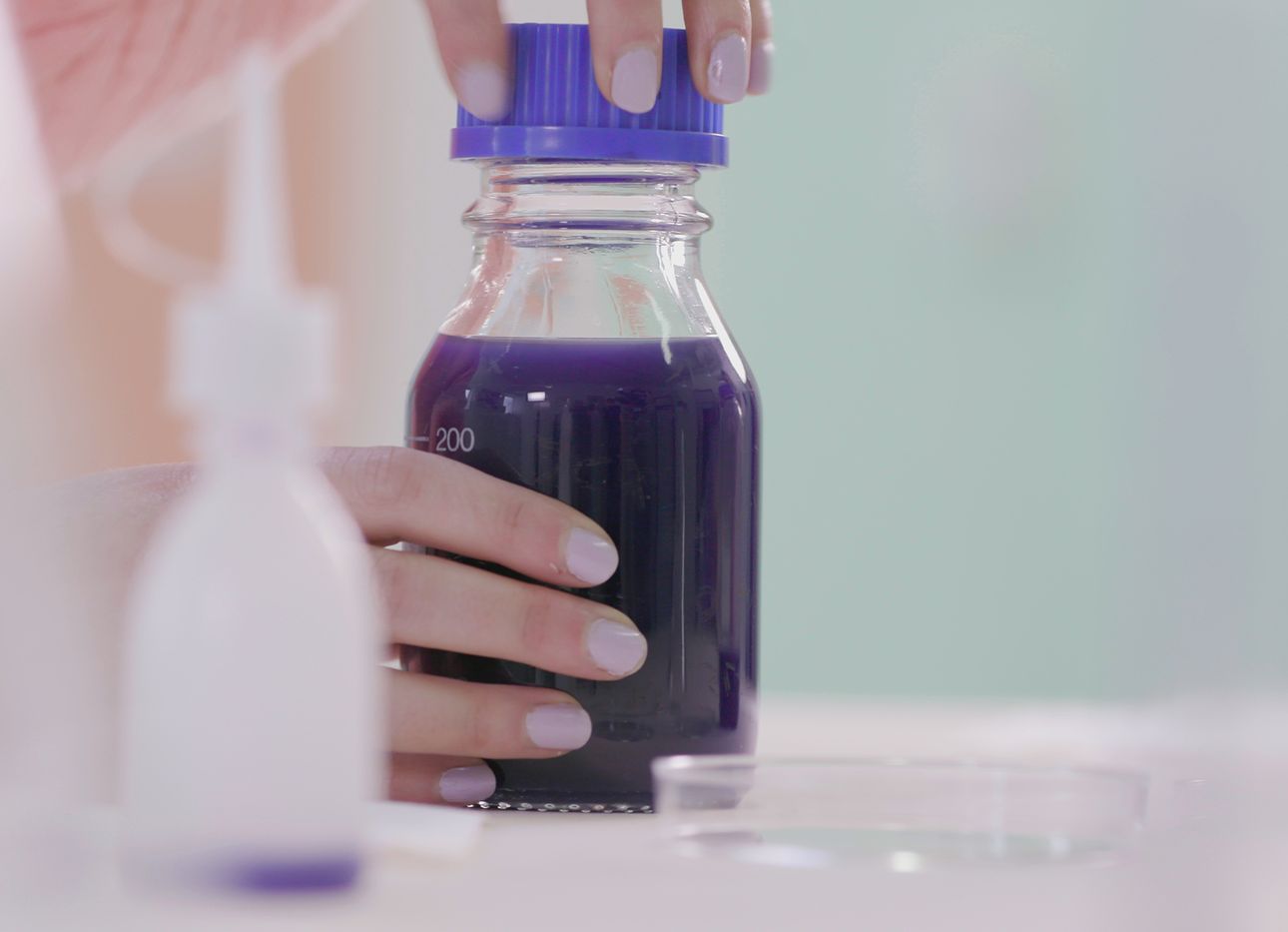
These Dyes Made by Bacteria Could Transform the Fashion Industry
By now, it’s a well-known fact that the multi-trillion-dollar fashion and apparel industry ranks as a top polluter worldwide, accounting for a whopping 10 percent of annual global carbon emissions. It is also the third-largest consumer of the planet’s water supply—exceeded only by the oil and paper industries—and is set to double its consumption rate by 2030. Much of this water is used to grow the fibers needed to make the textiles, but also to dye and finish them; tracing the manufacturing process for a single pair of blue jeans, to name just one everyday, extreme example, can require a staggering 1,000 gallons of water.
As brands and consumers alike grapple with these stark realities, two Rotterdam-based designers, Laura Luchtman and Ilfa Siebenhaar, are turning to biodesign to seek out solutions. With their ongoing project Living Colour, the duo experiment with pigment-producing bacteria as a sustainable alternative to artificial textile dyes, which are both toxic and resource-intensive. “Compared to other natural dye resources, bacteria don’t need vast amounts of land, water, time, and pesticides to grow,” the designers point out, in addition to lower dyeing temperatures. As Luchtman and Siebenhaar found, in a study conducted with sound engineer Eduard van Dommelen, bacteria also create more saturated color when exposed to certain sound-wave frequencies. Most intriguing of all, Living Colour’s work has already seen immediate, real-life applications in the industry. At this year’s Milan Design Week, held virtually in June, Living Colour teamed with Puma to present Design to Fade, the very first bacterial-dyed sportswear collection. “We see it as a collaboration with the organism,” Luchtman says, “and we like to learn from it as well.”